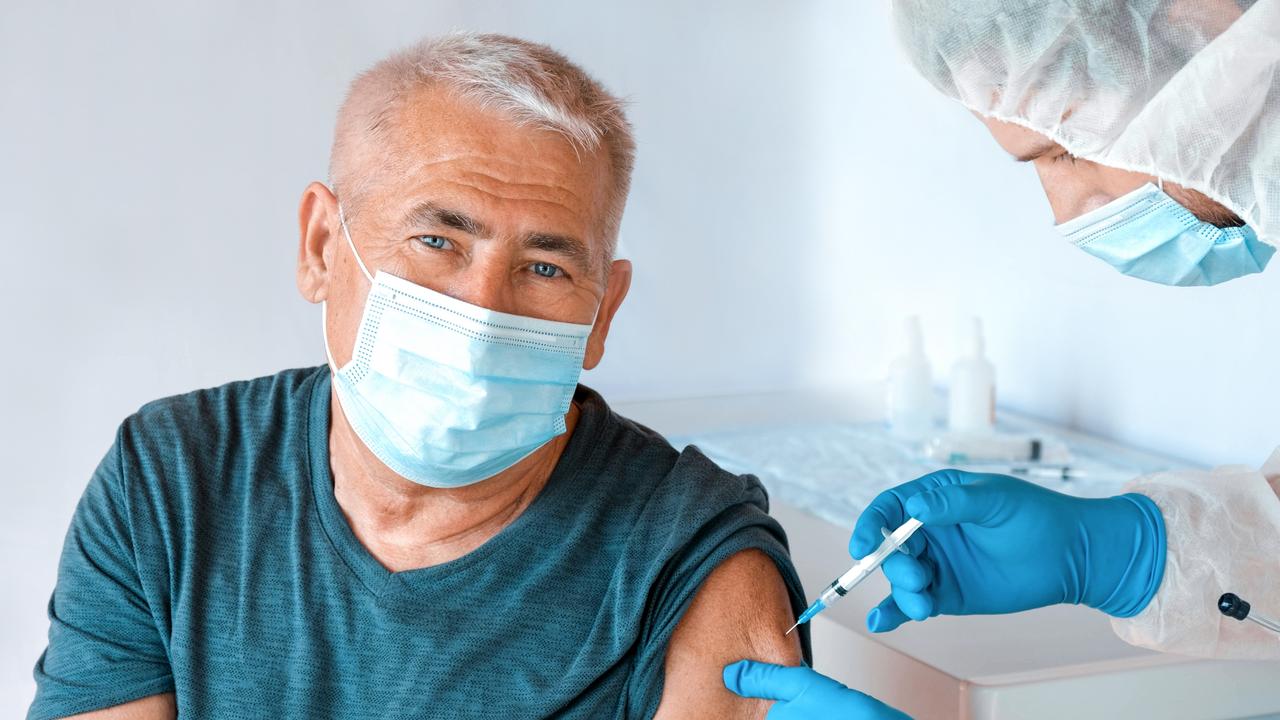The new normal: Doherty Institute modelling reveals how Australia could live with Covid
New Doherty Institute modelling released by the national cabinet is the first glimpse of how Australia could live with Covid in the near future, but the Premier was yet to respond overnight.
QLD Coronavirus News
Don't miss out on the headlines from QLD Coronavirus News. Followed categories will be added to My News.
Covid positive patients could isolate for just seven days as students would be tested twice a week and contact tracing scaled back once 80 per cent are fully vaccinated, according to detailed Doherty Institute modelling.
The report, released after National Cabinet met on Friday, is the first glimpse of how Australia could live with Covid in the near future.
It states that seven days of isolation for a Covid-positive person - who is fully vaccinated - is on average as effective at reducing transmission risk as 14 days.
It notes that when vaccination rates are at 80 per cent it will no longer be effective or sustainable to contact trace every location or casual contact and conduct lengthy interviews. The research was presented to all state and territory leaders, who will now have to decide whether to change their roadmap to reopening, based on the modelling.
The Palaszczuk Government has so far refused to commit to reopening to international travellers before reaching 90 per cent fully vaccinated, pointing to the need for more Doherty modelling in this space.
On Friday night there was no reaction to the modelling from the Premier.

The report found that health systems could at 80 per cent fully vaccinated cope with international arrivals quarantining for seven days - or not at all.
The Prime Minister’s Office, in a statement, said the Doherty Institute found surveillance in “high risk areas to identify outbreaks early” and contact management can reduce infections and keep schools open.
National cabinet was also told federal health Minister Greg Hunt is considering allowing the return of cruise ships — though it would again be ultimately up to individual state leaders to allow it.
The window into a “new normal” came as no new local cases of Covid-19 were recorded in Queensland, despite three in the border town of Goondiwindi the day before.
The town has now been dubbed one of the country’s first case studies on how high vaccination rates can help avoid lockdowns.
“I do think this is the first potential cluster like this that we’ve been able to confidently manage without locking down,” Infectious diseases expert Paul Griffin said.

As the nation looked almost certain to surpass its 80 per cent fully vaccinated milestone late on Friday, Queensland was meandering behind at 65.81 per cent.
Government data has revealed the state’s vaccination rates was on par with the worst performing NSW and Victoria council areas.
In Edward River, NSW, and Melbourne City, just 61.1 per cent and 67.4 per cent respectively are fully vaccinated against Covid-19.
By contrast, Queensland’s worst known performing LGA — Cherbourg — has a vaccination rate of just 26.9 per cent double dose.
Premier Annastacia Palaszczuk said the virus would “hunt down” the unvaccinated.
“What’s going to happen is when the borders open, we’ll be seeing hundreds of cases and what we’re seeing in Goondiwindi is a prime example of a highly vaccinated community and the virus hunting you down if you are unvaccinated,” she said.
“As I said, there’s this window of opportunity, and it is really important that Queenslanders come forward and get vaccinated.”
The Premier took aim at Gold Coast residents, stating that they needed to “really lift their game”.
She revealed that 77% of locals had received their first dose but was “concerned” about double dosage rates due to their close proximity from the border.
“I am concerned that the Sunshine Coast has much higher vaccination levels than the Gold Coast, and the Gold Coast is really close to the border,” she said.
“We are seeing what is happening at the moment at Goondiwindi and exactly the same could happen on the Gold Coast.”
The state government will be rolling out a social media campaign to target young Queenslanders and is looking at opening vaccination hubs during Schoolies.
National Cabinet was also told planning is “well underway” at a federal level to roll out the Covid-19 jab to children aged five to 11 once the medical regulators give the stamp of approval.
It agreed to release updated Doherty Institute modelling in coming days which would reveal health system capacities for dealing with “living with Covid” and what surge would look like.
The next meeting will be on December 10, a week before Queensland’s scheduled interstate border reopening date.




